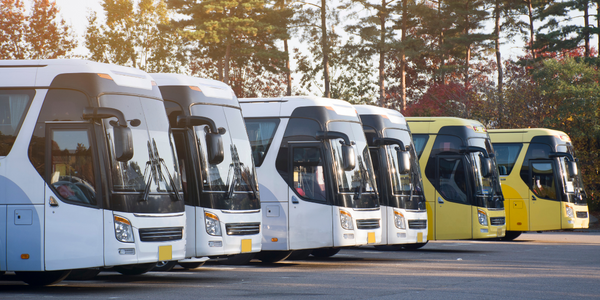
- Cybersecurity & Privacy - Network Security
- Networks & Connectivity - Cellular
- Networks & Connectivity - Routers & Bridges
- Platform as a Service (PaaS) - Connectivity Platforms
- Transportation
- Logistics & Transportation
- Fleet Management
When you have up to 200 buses on the streets for 23 hours each day, it’s essential to constantly monitor your vehicles to ensure the highest levels of on-time performance and safety. For the Suburban Mobility Authority for Rapid Transit (SMART), that challenge was growing increasingly difficult as its automatic vehicle location (AVL) system aged. The AVL uses a radio network to create a two-way communication link between each vehicle and SMART’s operations center where dispatchers can monitor vehicle locations, schedule performance, and other metrics. “Our AVL was 20 years old,” explained Mel Evans, IT manager for SMART. “We were relying on a legacy analog radio network that used three leased towers and a slice of frequency that was being retired. While this infrastructure was satisfactory 20 years ago, it wasn’t keeping pace with SMART. We wanted more reporting and we wanted real-time information that we could share with our public ridership.” One option was to upgrade from analog to digital signals and increase the number of towers. Evans noted that this would be cost-prohibitive. “At approximately $1 million each, the upgrade strategy was too expensive for our agency,” he said. “It became clearer that we needed to consider a different strategy that involved an entirely new AVL solution.”
Aiming to improve its ability to monitor its fleet of vehicles, reduce costs, and move off of the analog frequency, SMART began to evaluate a switch to cellular communication with voice over IP (VoIP). The agency hired a consultant to lead a rigorous evaluation/procurement process, which led SMART to select an AVL solution from Clever Devices, a leading provider of communications and technology solutions for forward-thinking transit agencies. “Clever Devices had a lot of experience,” said Evans, “and they’d implemented AVL with VoIP for other transit agencies. The heart of the cellular solution they proposed was the Digi TransPort WR44 R cellular router, which we were impressed with.” The Digi TransPort WR44 R is a rugged, enterprise-class mobile-access router. It is designed specifically for transit agencies and authorities that need reliable communications for onboard systems such as security video, fare collection, CAD/AVL, VoIP dispatch, and passenger Wi-Fi. Priority access is accomplished using the IETF Internet standard for Differentiated Services, which ensures VoIP calls and CAD/AVL functions have sufficient bandwidth across a constrained cellular LTE link. Fare collection and mobile ticketing systems generally require PCI compliance, which the WR44 R provides through its stateful firewall, IPSec VPN, network segmentation, and authentication. And the Digi Remote Manager enables efficient and effective network operations, providing critical functions such as mass updates, configuration profiling, and fleet monitoring with performance metrics reporting and alarms.

Case Study missing?
Start adding your own!
Register with your work email and create a new case study profile for your business.
Related Case Studies.













